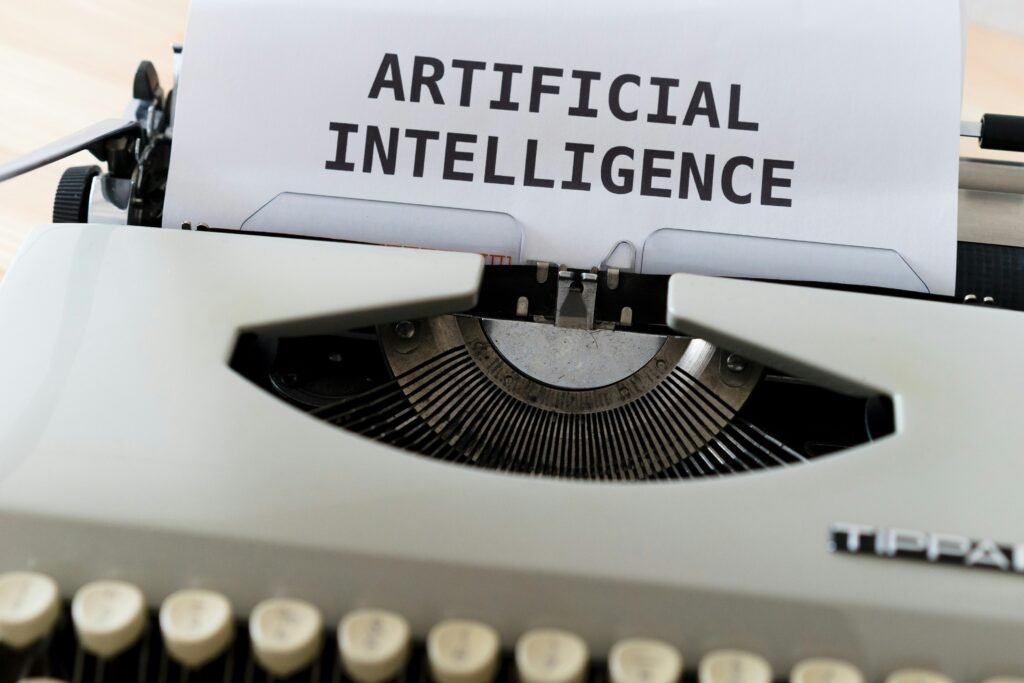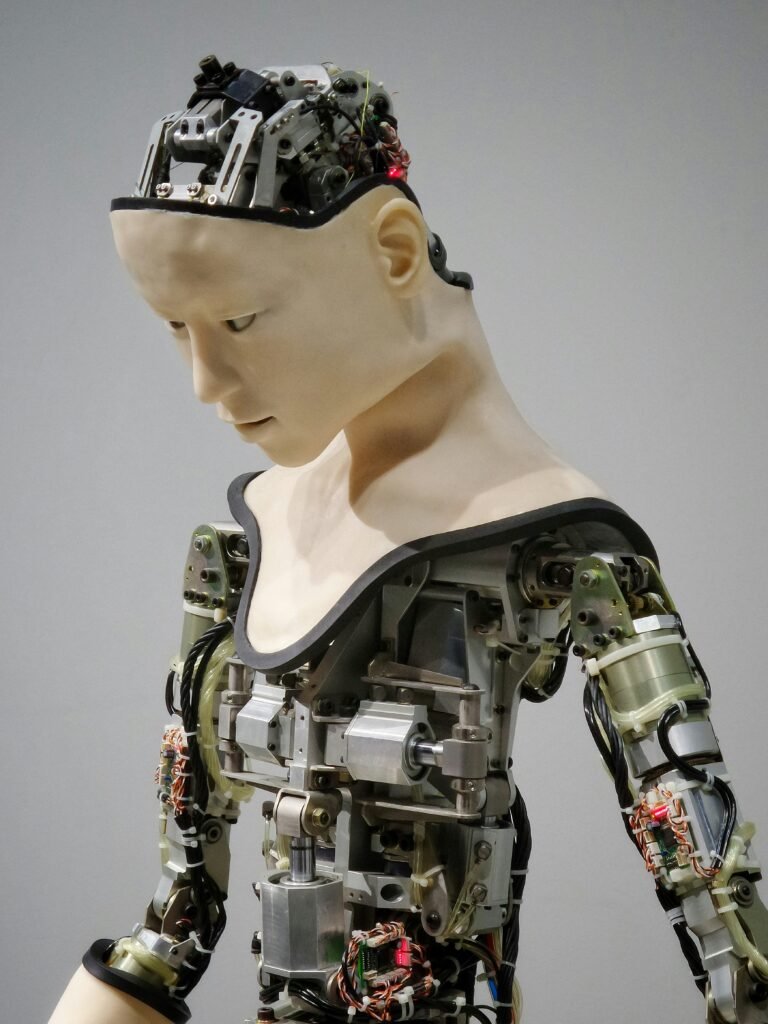Imagine a world where machines can think, learn, and adapt just like humans. That is the incredible promise of Artificial Intelligence (AI) technique. AI technique refers to the methods and approaches used to design and build intelligent systems that can perform tasks traditionally requiring human intelligence. From natural language processing to computer vision, AI technique has the power to revolutionize various industries, paving the way for exciting possibilities in the future. In this article, we will explore the fascinating world of AI technique, unraveling its inner workings and discussing its potential impact on our lives.

Definition of AI Technique
Artificial Intelligence (AI) technique refers to the use of advanced algorithms and computational models to enable computers to perform tasks that typically require human intelligence. AI techniques aim to mimic human thinking and decision-making processes, allowing machines to analyze, interpret, and understand complex data and make informed decisions or take appropriate actions. Various AI techniques have been developed to achieve different types of intelligent behavior, such as Neural Networks, Machine Learning, Natural Language Processing, and Computer Vision.
Neural Networks
Neural Networks are a fundamental AI technique inspired by the structure and functioning of the human brain. They consist of interconnected nodes (neurons) that process and transmit information. Neural Networks are trained using vast amounts of data, allowing them to learn patterns and relationships within the data and make predictions or classifications. They have been successfully applied in various domains, including image recognition, speech recognition, and natural language processing.
Machine Learning
Machine Learning is a type of AI technique that enables computers to learn from data without being explicitly programmed. It involves the development of algorithms that allow machines to automatically learn and improve from experience. Machine Learning algorithms analyze vast amounts of data, identify patterns, and make predictions or decisions based on these patterns. The approach has been particularly effective in areas such as data analysis, predictive modeling, and personalized recommendation systems.
Natural Language Processing
Natural Language Processing (NLP) is an AI technique focused on the interaction between computers and human language. It involves the development of algorithms and models that enable machines to understand, interpret, and generate human language. NLP techniques are used in tasks such as sentiment analysis, language translation, chatbots, and voice recognition. They enable computers to understand and respond to human language in a more natural and human-like manner.
Computer Vision
Computer Vision is an AI technique that enables computers to understand and interpret visual information from images or videos. It involves the development of algorithms that can analyze and extract meaningful information from visual data. Computer Vision techniques have applications in areas such as object detection and recognition, image classification, and facial recognition. They enable machines to “see” and understand the visual world, facilitating tasks that were previously exclusive to humans.
Implementation of AI Technique
Implementing AI techniques involves several stages, including data collection, data preprocessing, model training, and model testing.
Data Collection
Data collection is a crucial step in implementing AI techniques. It involves gathering relevant and representative data that will be used to train and/or test the AI models. The quality and quantity of the data collected significantly impact the performance and accuracy of the AI system. Various methods can be employed to collect data, such as web scraping, data mining, or using existing publicly available datasets.
Data Preprocessing
Data preprocessing is a vital step in preparing the collected data for AI model training. It involves cleaning and transforming the data to ensure its quality, completeness, and suitability for the specific AI technique being used. Data preprocessing tasks may include removing duplicates, handling missing values, normalizing data, or encoding categorical variables. By preprocessing the data, the AI models can better extract meaningful patterns and make accurate predictions or decisions.
Model Training
Model training is the process of building AI models by exposing them to the collected and preprocessed data. During training, the models learn patterns, relationships, and other characteristics within the data to make predictions or perform specific tasks. The training process involves adjusting the model’s parameters based on the input data and continuously optimizing its performance using optimization algorithms. The duration and complexity of the model training process depend on the size of the dataset and the complexity of the AI technique being used.
Model Testing
Model testing is conducted to evaluate the performance and accuracy of the trained AI models. Testing involves using a separate set of data, called the testing set, to assess how well the model can generalize its learned knowledge to unseen data. The performance metrics used for testing can vary depending on the specific AI technique and the task at hand. Common evaluation metrics include accuracy, precision, recall, and F1 score. Model testing helps identify any potential shortcomings or biases in the AI system and provides insights for further improvements.
Types of AI Technique
There are various types of AI techniques that cater to different approaches and problem domains.
Supervised Learning
Supervised Learning is a type of machine learning technique where the AI model is trained using labeled examples. The training data consists of input data along with the corresponding correct output or target variable. The model learns the mapping between the input and output variables, enabling it to make accurate predictions or classifications on unseen data. Supervised Learning is commonly used in tasks such as regression, classification, and object recognition.
Unsupervised Learning
Unsupervised Learning is a machine learning technique that deals with unlabeled data. In this approach, the AI model learns patterns, structures, or relationships within the data without any predefined output labels. Unsupervised Learning algorithms aim to uncover hidden patterns or groupings within the data, enabling tasks such as clustering, anomaly detection, and dimensionality reduction. This technique is particularly useful when there is a lack of labeled data or when exploring unknown data patterns.
Reinforcement Learning
Reinforcement Learning is an AI technique that revolves around an agent learning through trial and error interactions with an environment. The agent takes actions in the environment and receives rewards or penalties based on its performance. By maximizing the cumulative rewards received, the agent learns the optimal sequence of actions to take in different situations. Reinforcement Learning has been successfully applied in game playing, robotics, and autonomous systems.
Deep Learning
Deep Learning is a subset of machine learning that focuses on the use of artificial neural networks, particularly deep neural networks with multiple layers. Deep Learning is highly effective in handling large and complex datasets, as it can automatically learn hierarchical representations of the data. This technique has achieved remarkable results in areas such as image recognition, speech recognition, natural language processing, and generative modeling.
Applications of AI Technique
AI techniques have found numerous applications across various industries and domains, enabling advancements and improvements in various tasks and systems.
Virtual Assistants
Virtual Assistants, such as Siri, Amazon Alexa, and Google Assistant, rely on AI techniques, particularly Natural Language Processing, to understand and respond to user queries and commands. These intelligent assistants provide information, perform tasks, and interact with users using voice commands or text inputs. They have become an integral part of many people’s daily lives, offering convenience and assistance in various domains, from answering questions and setting reminders to controlling smart home devices.
Recommendation Systems
Recommendation Systems employ AI techniques, such as Machine Learning and Collaborative Filtering, to make personalized recommendations to users based on their preferences, behavior, and historical data. These systems are widely used in e-commerce platforms, streaming services, and social media platforms to suggest relevant products, movies, songs, or connections. By analyzing vast amounts of data and learning from user interactions, recommendation systems enhance user experiences by providing tailored suggestions.
Image Recognition
AI techniques, especially Computer Vision and Deep Learning, have revolutionized image recognition tasks. Image recognition systems can automatically classify and identify objects, scenes, or patterns within images or videos. This technology has important applications in areas such as autonomous vehicles, surveillance systems, and medical imaging. Image recognition enables machines to process visual information in real-time and make decisions or take actions based on the identified objects or situations.
Fraud Detection
AI techniques have significantly contributed to fraud detection and prevention in various industries, including finance and cybersecurity. Machine Learning algorithms can analyze large volumes of financial data and detect anomalous patterns or transactions that may indicate fraudulent activities. By continuously learning from historical data, AI-powered fraud detection systems become increasingly effective at identifying new patterns and adapting to emerging fraud techniques. This helps businesses and organizations prevent financial losses and mitigate risks.

Advantages of AI Technique
AI techniques offer several advantages that make them increasingly popular and versatile across different sectors.
Automation of Tasks
One of the significant advantages of AI techniques is their ability to automate repetitive and mundane tasks. By leveraging AI, businesses can streamline their operations, save time, and increase overall efficiency. Automated processes reduce human errors, minimize manual labor, and enable employees to focus on more creative and high-value tasks. AI-powered automation has been particularly impactful in manufacturing, customer service, logistics, and data analysis.
Improved Decision Making
AI techniques provide organizations with powerful tools to make data-driven and informed decisions. By analyzing vast amounts of data and extracting meaningful insights, AI models can identify trends, patterns, and relationships that may not be apparent to humans. This enables businesses to make accurate forecasts, optimize strategies, and optimize resource allocation. Improved decision making fueled by AI can lead to cost savings, increased productivity, and better overall outcomes.
Efficient Data Processing
AI techniques excel in processing and analyzing vast amounts of data at unprecedented speeds. With the increasing volume and complexity of data generated, traditional data processing methods often fall short. AI-powered algorithms can quickly analyze data, identify relevant patterns, and extract actionable information. This enables businesses to gain insights in real time, make timely decisions, and respond to changing market conditions.
Predictive Analytics
AI techniques, such as Machine Learning and Deep Learning, enable organizations to leverage predictive analytics capabilities. By analyzing historical data and learning from patterns, AI models can predict future trends, customer behaviors, or market dynamics. Predictive analytics helps businesses anticipate demand, optimize resource allocation, and create personalized experiences for customers. This ability to anticipate future events provides a competitive advantage and enables proactive decision making.
Challenges and Limitations of AI Technique
Although AI techniques offer tremendous potential, they also face challenges, limitations, and ethical concerns that need to be addressed for responsible and effective implementation.
Ethical and Legal Concerns
The development and implementation of AI techniques raise ethical and legal concerns that need careful consideration. Questions of privacy, bias, accountability, and fairness arise when using AI systems that make decisions impacting individuals or society. Responsible AI development involves ensuring transparency, accountability, and inclusivity in the decision-making process, with careful consideration of the potential ethical and social implications.
Data Privacy and Security
AI techniques rely on large amounts of data to train and operate effectively. The collection, storage, and use of personal and sensitive data pose significant privacy and security risks. Safeguarding data and ensuring compliance with data protection regulations is crucial. Organizations must implement robust security measures and establish clear policies for collecting, storing, and processing data to protect individuals’ privacy and address potential data breaches.
Bias and Fairness
AI systems are only as unbiased as the data they are trained on. Biases present in the training data can be perpetuated, leading to biased decision-making or discriminatory outcomes. Addressing biases and promoting fairness in AI systems is essential to prevent discrimination based on race, gender, or other protected attributes. Efforts should be made to diversify training data, regularly evaluate AI systems for biases, and establish mechanisms for recourse and appeals when AI-powered decisions have unintended consequences.
High Computational Power Requirement
Implementing AI techniques often requires significant computational power and resources. Training complex AI models with large datasets can be computationally intensive, requiring powerful processors, high-performance computing systems, and substantial energy consumption. The computational requirements and associated costs can pose challenges for organizations with limited resources. The development of more efficient algorithms and systems is needed to overcome these limitations and make AI techniques more accessible.

Future of AI Technique
The future of AI techniques is promising, with potential applications and advancements in various domains.
AI in Healthcare
AI techniques have already started making a significant impact in healthcare, assisting in medical diagnosis, drug discovery, and patient monitoring. As AI models become more accurate and reliable, they have the potential to revolutionize personalized medicine, facilitate remote healthcare, and enable early detection and intervention for various diseases. AI-powered systems can also analyze large healthcare datasets to identify patterns and insights that can improve population health and public health interventions.
AI in Transportation
AI techniques are reshaping the transportation industry, enabling advancements in autonomous vehicles and transportation systems. AI-powered algorithms can analyze real-time data from sensors, cameras, and navigation systems to make intelligent decisions regarding route optimization, traffic management, and vehicle safety. Self-driving cars, drones, and smart transportation networks are just a few examples of how AI is transforming the way we travel and transport goods.
AI in Education
AI techniques have the potential to revolutionize education by personalizing learning experiences, facilitating adaptive tutoring, and automating administrative tasks. AI-powered systems can analyze student performance data and provide tailored recommendations or interventions to enhance learning outcomes. Virtual tutors and chatbots can assist students in real-time, answering questions and providing personalized feedback. AI also enables educators to analyze vast amounts of educational data to gain insights and improve curriculum design and instructional strategies.
AI in Finance
The finance industry is increasingly adopting AI techniques to enhance decision making, optimize processes, and detect fraud. AI-powered algorithms can analyze market trends, historical data, and customer behavior to make better predictions and optimize investment strategies. Robotic Process Automation (RPA) powered by AI can automate repetitive tasks, such as document processing and compliance checks. AI also plays a crucial role in fraud detection and prevention, helping financial institutions identify suspicious patterns and transactions.
AI Technique vs. Traditional Techniques
Compared to traditional techniques, AI techniques offer several advantages that make them more effective in handling complex problems and dynamic environments.
Speed and Efficiency
AI techniques, particularly Deep Learning, can process and analyze vast amounts of data at remarkable speeds. Traditional techniques often struggle to scale and process large datasets efficiently. AI techniques enable real-time decision making, immediate response to changing conditions, and rapid processing of complex problems that would be time-consuming or infeasible for humans.
Adaptability to New Data
AI techniques have the capacity to learn and adapt from new data. Unlike traditional techniques that require manual reprogramming or modification, AI models can continuously update their knowledge and improve their performance as new data becomes available. This adaptability enables AI techniques to handle dynamic and evolving systems or environments effectively.
Ability to Handle Complex Problems
AI techniques excel in handling complex problems that involve high-dimensional data, nonlinear relationships, or intricate patterns. Traditional techniques may struggle when faced with the complexity and uncertainty present in real-world problems. AI techniques, particularly Deep Learning, can automatically extract and learn hierarchical representations of complex data, enabling them to tackle intricate problems with superior accuracy and performance.
Continuous Learning
AI techniques, such as Reinforcement Learning, have the ability to learn continuously from interactions with an environment or from new data. This continuous learning capability allows AI models to improve over time, even after initial training. Traditional techniques often require frequent manual updates or improvements, whereas AI models can adapt and optimize themselves through experience.
AI Technique in Popular Culture
AI techniques have long captured the imagination of popular culture and have been depicted in various forms of media.
AI in Movies
Movies like “Blade Runner,” “Ex Machina,” and “Her” explore the ethical and existential implications of AI. These films present AI systems with human-like intelligence, emotions, and consciousness, raising questions about the nature of humanity, identity, and the boundaries between man and machine.
AI in Literature
Science fiction literature features a wealth of narratives that delve into the possibilities and consequences of AI. Books such as Isaac Asimov’s “I, Robot” and Arthur C. Clarke’s “2001: A Space Odyssey” present scenarios where AI-powered systems challenge human control and raise questions about ethics, power, and our place in the universe.
AI in Video Games
AI techniques are integral to the development of intelligent computer-controlled opponents or non-player characters (NPCs) in video games. These AI systems aim to create realistic and challenging gameplay experiences, allowing NPCs to adapt to players’ actions, exhibit human-like behaviors, and make intelligent decisions.
AI Art
AI techniques, particularly Generative Adversarial Networks (GANs), have been employed to create artworks that blur the boundaries between human-created and machine-generated art. AI-generated artworks, such as paintings, music, and poetry, demonstrate the potential of AI techniques to enhance creativity and redefine the role of the artist.
Conclusion
AI techniques have increasingly become an integral part of our society, transforming various industries and domains. The definition, implementation, and types of AI techniques have been explored, along with their applications, advantages, challenges, and the future possibilities they hold. The impact of AI techniques is growing, and their ethical implementation remains crucial. Continued research and development will shape the future of AI, unlocking new possibilities and advancements, while addressing the ethical concerns and limitations. As AI techniques continue to evolve, it is vital to foster responsible use, transparency, and accountability, ensuring that AI serves humanity’s best interests.






